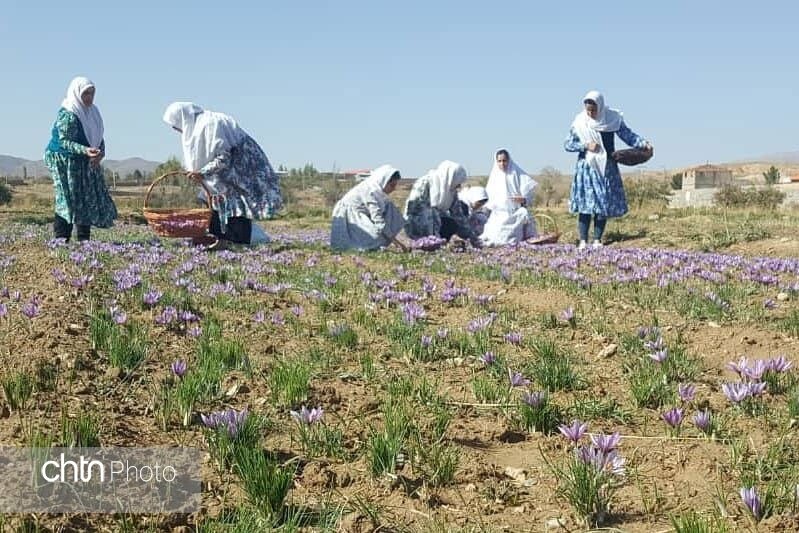Saffron farming lifting agritourism in central Iran

TEHRAN – Over the past couple of years, saffron farming has dramatically been developed in lands encircling Natanz, a phenomenon that local tourism officials believe could help develop agritourism across the central Iranian town.
Saffron production and harvest have increased significantly during the first half of the current Iranian calendar year 1399 (March 20 - September 20), Natanz tourism chief, Hossein Yazdanmehr announced on Sunday.
Saffron festivals were held in Natanz in the past two years, attracting hundreds of domestic and foreign holidaymakers, which helped the oasis town win fame as an agritourism hub.
However, this year’s edition of the festival is still up on the air due to the coronavirus outbreak, he said.
As the region has a proper climate, saffron cultivation has scheduled to be implemented near the two cities of Natanz and Badrud over more than two months, the official added.
So far saffron bulbs have been harvested from 332 hectares of farms across Natanz, he said.
“Considering that saffron is the most valuable plant in Iran and it has special characteristics in prevention and treatment of some diseases, farming it by the means of proper planning and investment holds a significant potential to attract many domestic and foreign visitors,” the official explained.
Back in August, the official announced that a case study is being carried out on Natanz to find out how saffron farming may contribute to the development of agritourism in the region.
Iranian saffron is known as the “red gold”. Saffron is a magical ingredient in Persian culture, from aromatic foods and colorful desserts to physical and spiritual medicine. Every year, the saffron harvest season begins in early November. While most other vegetation is gone, the bright purple flowers cover the fields and create an outstanding landscape in dry regions in Iran.
Major saffron producers of Iran are located on the east side of the country. If you would like to see the biggest market, head to Mashhad, which is also known for its religious importance.
Agritourism and nature-tourism enterprises might also include outdoor recreation (fishing, hunting, wildlife study, horseback riding), educational experiences (cannery tours, cooking classes, or tea or coffee tasting), entertainment (harvest festivals or barn dances), hospitality services (farm stays, guided tours, or outfitter services), and on-farm direct sales (u-pick operations or roadside stands).
Today, agritourism is regarded as a stimulus to the imbalanced economy of agriculture sectors and the tendency for emotional and nostalgic roots of the modern world citizens and due to factors such as visitor participation in farm activities, direct purchase of products, spending a night at a farm, curiosity and learning about the farm and agriculture products has been able to create a wide target population.
The ancient city of Natanz is home to several historical structures and monuments such as a 1000-year-old mosque. Located 120 kilometers northeast of the city of Isfahan, the city enjoys a beautiful landscape and a pleasant climate, which made it a summer capital during the Safavid era (1501–1736). The town is also associated with pottery making and tile production.
ABU/AFM
